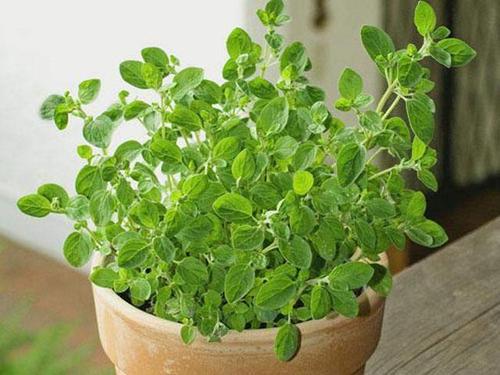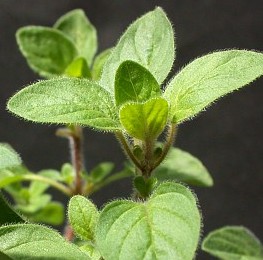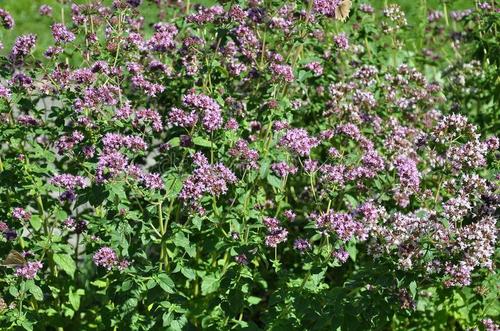Oregano profile
Written by Maggie
Feb 01 2021

Oregano is a Lamiaceae. Oregano is a perennial semi-shrub or herb, aromatic; Rhizome is oblique, woody. The stem is up to 60 cm tall, four-prismatic, often leafless near the base. Leaves are petiolate, abaxially suborbicular, pubescent, leaf blade ovoid or oblong-ovoid, apex obtuse or slightly obtuse, bright green above, often with a purple faint, pale green below, bracts mostly sessile, inflorescences corymbiform panicle, many flowers dense, spicate composition; Bracts of Oregano are acute, green or purplish halo, calyx campanulate, corolla purplish red to pale red to white, tubular campanulate, bisexual corolla, corolla clearly clipped, filaments filiform, flat, glabrous, anthers ovoid, styles slightly beyond stamens, lobes subulate. Nutlets of Oregano are ovoid.
Oregano picture

Morphological characteristics of oregano
Oregano is a herb or subshrubs perennial, aromatic; Rhizome is oblique, its nodes with slender fibrous roots. Stems of Oregano are erect or prostrate near the base, usually 25-60 cm tall, more or less purplish, four-pronged, with inverted or slightly curling pubescent, numerous, emanating from the rhizome, with flowering branches at upper-middle nodes, sterile short branches at lower nodes, often without leaves near the base.
Leaf handle of Oregano is 2-7 mm long, the front slot, rear suborbicular, pilose, ovoid or oblong-elliptic leaves ovoid, 1-4 cm long, 0.4 1.5 cm wide, apex obtuse or slightly obtuse, base broadly cuneate to suborbicular or slightly cordate, margin entire or away from the small serrated, light green, with purple halo, often with no obvious pilose and glandular dots of sag, light green, below was apparently pilose and glandular dots of sag, lateral veins 3-5 pairs, with midrib above was not significant, the following: how many prominent; Bracts of Oregano are mostly sessile, often purplish.
The inflorescence of Oregano is a corymbiform panicle, open, many flowers intensive, by the majority of long in fruit.
Oregano is consisting of elongated spikelets; Bracts are oblong-obovate to obovate or oblanceolate, acute, green or purplish haloid, ca. 5 mm, with parallel veins, entire. Calyx campanulate, with teeth 3 mm long, outside hirsute or subglabrous, inside with a white pilose ring at the throat, 13 veins, more or less conspicuous, calyx teeth 5, triangular, equal, 0.5 mm long. Corolla of Oregano is purple, pink and white, tubular bell-shaped, 7 mm long, corolla tube between 5 mm long, significantly more than calyx, while the female corolla tube shorter than calyx, ca. 3 mm long, thin pubescent outside, inside was thin pubescent in the throat, eaves obvious two lip, upper lip erect, ovoid, 1.5 mm long, apex 2 shallow crack, opened his lower lip, 2 mm long, 3 crack, lobes larger, lateral lobes smaller, oblong-elliptic ovoid. Oregano has 4 stamens, in bisexual flowers, posterior pair shorter than the upper lip, anterior pair slightly protruding corolla, in female flowers, anterior pair subequal, concealed, filaments filiform, flattened, glabrous, anthers ovoid, 2-locule, bisexual flowers separated by triangular-cuneate compartments, cells divergent, while in female flowers the compartments of septum staminodes are nearly parallel. The disk of Oregano is flat-topped. Style of Oregano is slightly beyond stamen, apex unequally 2-lobed, lobes subulate.
Nutlets of Oregano are ovoid, ca. 0.6 mm long, apex rounded, base abruptly narrow, marginally angulate, brown, glabrous.
Oregano origin of habitat
Oregano is distributed in China's Henan, Jiangsu, Zhejiang, Anhui, Jiangxi, Fujian, Taiwan, Hubei, Hunan, Guangdong, Guizhou, Sichuan, Yunnan, Shaanxi, Gansu, Xinjiang and Tibet; Oregano is also found in Europe, Asia and North Africa. It is also introduced to North America. Oregano was born on the roadside, hillside, under the forest and grassland, 500-3600 meters above sea level.
Oregano growth habit
Oregano likes a warm and humid climate, strong adaptability. Oregano is advisable to cultivate sandy loam with sunny, deep soil layer, loose and fertile soil and good drainage. The soil requirements are not strict, general soil can be cultivated, but alkaline soil, sandy soil is not suitable for cultivation.
Oregano propagation methods
In the direct seeding method, the seeds of Oregano were sown in the spring. After the seeds were mixed with fine sand, the seeds were sown in acupoints according to the row spacing of 25×20 cm. Drill sowing according to the row spacing of 25 cm open trenches, the seeds of Oregano will be evenly planted into. Before sowing, the seed dressing with new fat film and seed dressing agent are used to ward off underground diseases and insects, isolate virus infection, strengthen the respiratory intensity and improve the seed germination rate. After preparing the ground for planting and then using a new high fat film 600-800 times the liquid spray on the surface of the soil, it can protect moisture and prevent evaporation, sunscreen and drought resistance, prevent soil hardening, asphyxiation and isolation of disease and insect sources, improve the emergence rate.

Oregano growing methods
After the seedlings of Oregano out of the timely thinning, medium tillage weeding, irrigation and fertilization, and spray on the plant surface of the new fat film, enhance the efficiency of fertilizer, prevent germs infection, improve the ability to resist natural disasters, improve the efficiency of photosynthesis, protect the seedling growth. And timely spray strong stem spirit to make the plant stem robust, lush plants. During the Oregano growth of the annual plowing weeding 2-3 times, and combined with human excrement and urine 2-3 times.
Prevention and control of diseases and pests of Oregano
Oregano diseases include root rot disease, sclerotia disease, insect pests such as ground tiger, cultivation process should pay attention to control. After harvesting, the root will undergo a 4-7 day bleeding period and about 20 days after callus formation, then new buds will start to differentiate and a multi-branched plant cluster will be formed. Injured flow period to bud differentiation should not be watered, in case of rotting roots. At the same time, it is necessary to enhance the ability to resist disasters, reduce the use of pesticides and fertilizers, and reduce residual toxins.
The main value of Oregano
Medicinal
The whole Oregano grass is used as medicine can prevent influenza, treat heatstroke, cold, headache, body weight, abdominal pain, vomiting, chest and diaphragm fullness, children's food distension, abdominal distension, diarrhea, menorrhagia, leaky belt, skin itching and edema and other diseases, its function of dispersing cold, especially better than mint.
Economic
Oregano aromatic oil can be extracted from whole grass, fresh stem and leaves contain 0.07-0.2% oil, dry stem and leaves 0.15-4% oil, specific gravity of oil (15℃) 0.868-0.910, rotation (20℃) -20°-70°, alcohol content (based on vanillin) 2-3%, phenol content (based on thymol) about 7%. In addition to the preparation of flavor, Oregano is also used as the ingredients of distillers. In addition, Oregano is a good nectar plant.

Latest Updated
- Benefits of Bugleweed - 7 Science-backed Health Benefits
- Bugleweed Dangers & Side Effects - Is It Poisonous?
- How to Plant Evergreen Trees - What You Should Know
- When to Plant Evergreens - Grow Guide for Evergreen Trees
- 12 Wonderful Evergreen Shrubs for Your Garden
- 12 Popular Evergreen Plants with Pictures for Beginners
- When And How To Prune A Lilac Bush Like a Pro
- How to Grow & Care for Lilac Vine (Hardenbergia Violacea)
- Japanese Lilac Tree (Syringa Reticulata) Care & Propagation Guide
- Shumard Oak Pros and Cons - What to Know
Popular Articles
- Winter maintenance of Antirrhinum Majus
- How to Grow Terminalia Mantaly Tree
- How to Grow and Care for Crossostephium Chinense
- How to grow Antirrhinum Majus in spring
- Peristeria Elata (Dove Orchid) Profile: Info & Care Guide
- Underwatered Snake Plant (Sansevieria Trifasciata) - Signs And How To Fix
- How to Care for Brazilian Jasmine Plant (Mandevilla Sanderi)
- How to Grow & Care for Graptopetalum Purple Delight in Summer
- Rosa Chinensis (China Rose): Plant Growing & Care Tips
- How to Care for Baby Sun Rose (Aptenia Cordifolia)